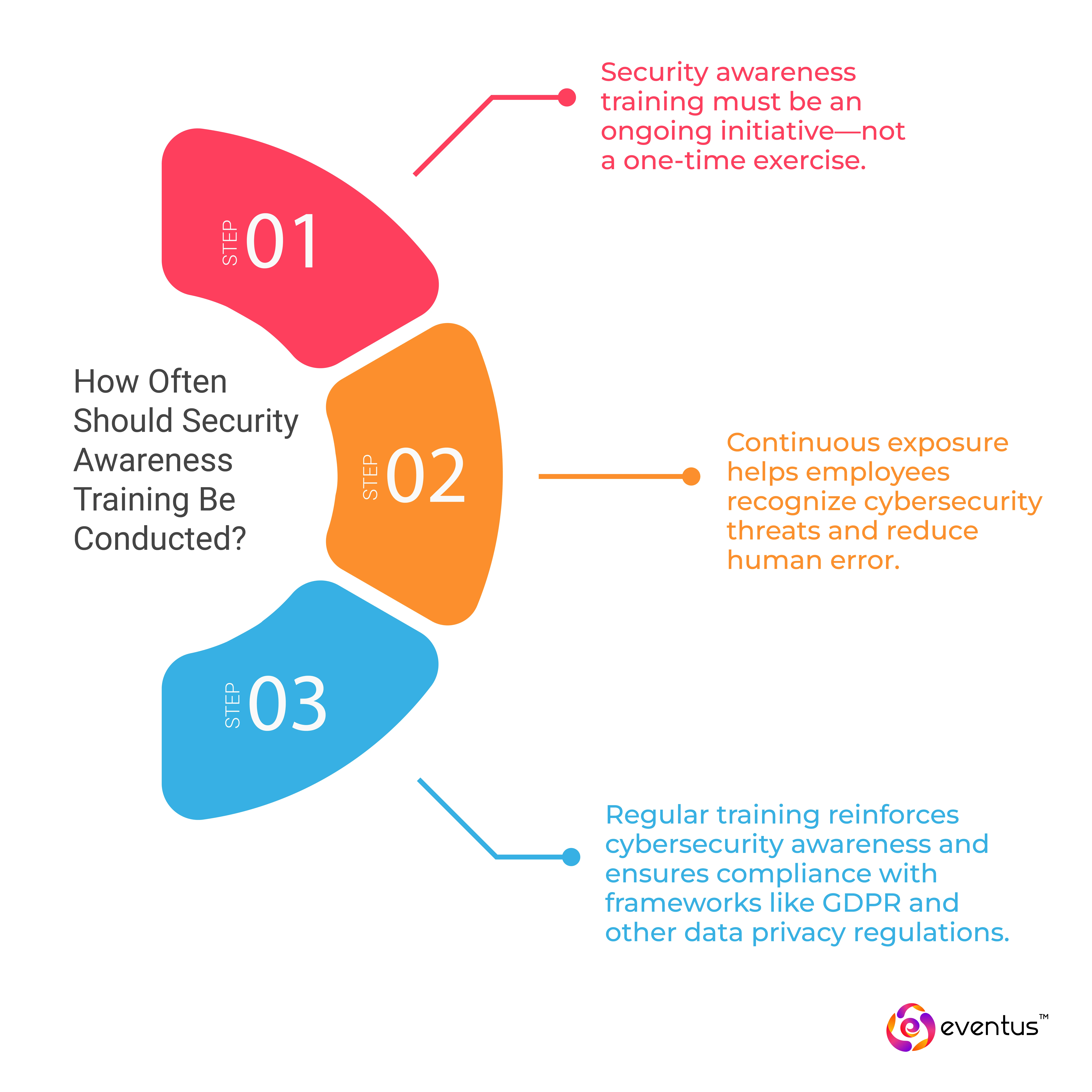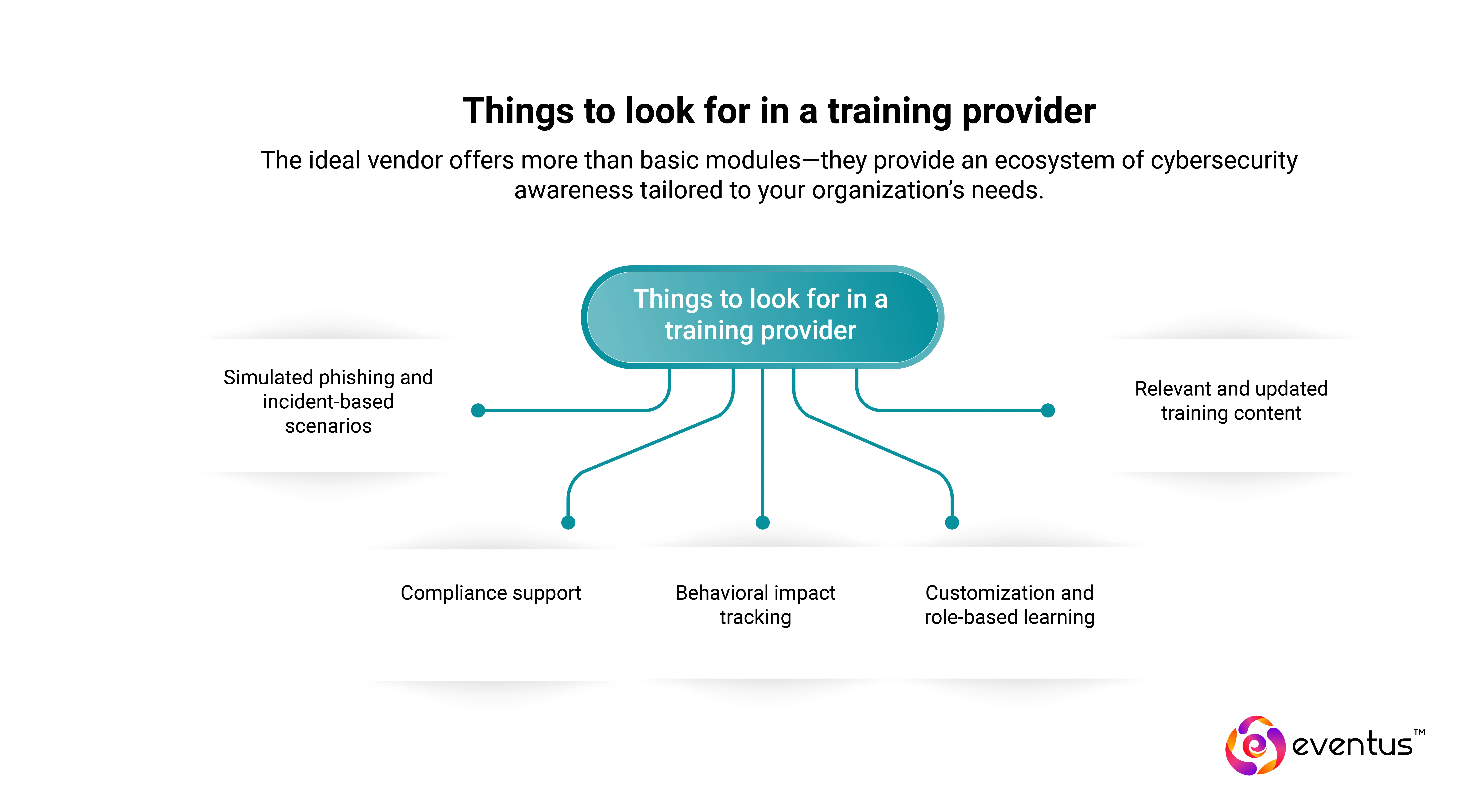Security awareness training is essential for building a resilient cybersecurity culture and supporting your organization’s Security Operations Center (SOC) in detecting and responding to human-targeted threats. This article explores its importance, steps to build an effective program, key tools and platforms, ideal training frequency, methods to measure retention, and how to choose the right vendor. Whether aligning with compliance frameworks or tailoring content to specific roles or industries, the guide offers practical insights to strengthen employee readiness against evolving cyber threats.
Table of Contents
What do you mean by security awareness training?
Security awareness training is a structured educational program designed to help employees recognize and respond to cybersecurity threats such as phishing, social engineering, and data breaches. It equips organizations with the tools to reduce human error, improve compliance, and strengthen overall security posture. Many organizations now leverage SOC as a Service to bolster their training programs, integrating continuous threat monitoring and expert-led incident response to reinforce employee vigilance.
Why is Security Awareness Training Important?
Security awareness training is not just a best practice—it's a foundational pillar in today’s enterprise cybersecurity strategy. By reducing human error, minimizing exposure to cyber threats, and reinforcing secure behavior, it builds resilience against increasingly sophisticated attacks. Partnering with a managed SOC provider can amplify these efforts by delivering actionable threat intelligence and contextualized security insights that keep your training aligned with real-world incident trends.
Awareness training reduces human error
- It teaches employees how to handle sensitive information securely.
- Simulated phishing tests train users to detect and report threats.
- Modules focused on online behavior reduce risk from negligent actions.
- Reinforcement through training content boosts long-term retention.
Impact on security risks
- Builds a culture of accountability and cyber vigilance.
- Decreases the likelihood of breaches caused by internal negligence.
- Promotes consistent adherence to security practices and compliance training. Builds a culture of accountability and cyber vigilance. Decreases the likelihood of breaches caused by internal negligence. Promotes consistent adherence to security practices and compliance training. Partnering with a managed security service provider can further strengthen your organization’s resilience by providing continuous monitoring and expert guidance.
Protects brand reputation
- Reduces the probability of publicized incidents due to employee error.
- Strengthens customer trust by demonstrating your commitment to information security.
- Aligns your organization with GDPR and other data privacy regulations, reducing legal exposure.
How to Build a Security Awareness Training Program?
It empowers employees to recognize and avoid security threats while promoting a culture of vigilance across the enterprise.
1. Implementing a training program
The implementation timeline for a security awareness training program typically ranges from 2 to 8 weeks, depending on the organization's size, infrastructure, and content customization requirements. Fast-track deployment is possible using pre-configured training modules available on leading security awareness training platforms. However, integrating training with internal policies, user segmentation, and compliance frameworks may extend the rollout timeline.
2. Effective awareness strategy
Creating a cybersecurity awareness training program that drives measurable impact involves several key steps:
- Assess organizational risk: Identify the most common cyber threats, such as phishing and social engineering.
- Define learning objectives: Align goals with information security, data privacy, and compliance training requirements.
- Segment employees: Create training paths tailored to roles, departments, and access levels to reduce user risk.
- Develop content strategy: Use interactive cybersecurity awareness training content, including phishing simulations, videos, and quizzes.
- Establish cadence: Plan annual training cycles with regular updates and additional training based on emerging threats.
- Measure effectiveness: Track performance using metrics like phishing click rates, breach incident reduction, and training completion.
3. Alignment of training to compliance frameworks
- Map training modules to regulatory requirements, internal security practices, and the expectations of SOC auditors.
- Address obligations under PCI-DSS, HIPAA, or ISO 27001, depending on industry.
- Maintain audit-ready records of training content, participation, and completion.
- Incorporate compliance training into onboarding and refresher courses.
4. Tailoring training to employee roles
- Technical teams should receive modules on malware, secure code, and email and web filtering.
- HR and finance teams benefit from modules focused on phishing awareness, personally identifiable information, and data privacy.
- Executives and CISOs need training on cybercrime trends, brand reputation, and strategic response planning.
What platforms and tools are used for awareness training?
- Learning Management Systems (LMS) with progress tracking and reporting
- Gamified modules to enhance retention and encourage participation
- Phishing simulations to assess and improve real-world response
- Online learning portals for remote and hybrid workforces
- Simulated social engineering attacks for risk-based reinforcement
Tools from providers like Amazon’s cybersecurity awareness training or KnowBe4 help companies deploy training efficiently and equip employees with the knowledge needed to recognize and avoid cyberattacks.
How Often Should Security Awareness Training Be Conducted?
- Security awareness training must be an ongoing initiative—not a one-time exercise—and is recommended by soc service organisations to maintain vigilant staff.
- Continuous exposure helps employees recognize cybersecurity threats and reduce human error.
- Regular training reinforces cybersecurity awareness and ensures compliance with frameworks like GDPR and other data privacy regulations.
What is the ideal frequency for employee training?
- Core security awareness training should be conducted at least once a year.
- Quarterly modules are recommended for most industries to refresh cybersecurity knowledge.
- Monthly sessions may be necessary in high-risk environments (e.g., finance, healthcare).
- Follow NIST guidelines to adapt training frequency based on evolving cyber threats.
- Include refreshers when new vulnerabilities or cyberattacks emerge.
How to Choose the Right Security Awareness Training Vendor?
Selecting the right security awareness training vendor is crucial for ensuring your organization’s defenses extend beyond firewalls and endpoint solutions to the people who interact with them daily. Just as organizations evaluate SOC as service vendors in India for robust threat monitoring, you should choose a training provider that aligns with your long-term cybersecurity goals, meets compliance requirements, and drives measurable employee behavior change. Here's how to make an informed choice that supports long-term cybersecurity goals, compliance, and employee behavior change.
Things to look for in a training provider
The ideal vendor offers more than basic modules—they provide an ecosystem of cybersecurity awareness tailored to your organization’s needs.
- Relevant and updated training content: Ensure the vendor updates its cybersecurity awareness training program regularly to address emerging cyber threats like phishing attacks, malware, and social engineering.
- Customization and role-based learning: Look for training programs that are adaptable for different departments, roles, and risk profiles.
- Behavioral impact tracking: An effective solution should offer analytics that measure reduced human error and improved cybersecurity knowledge over time.
- Compliance support: Ensure the platform aligns with GDPR, data privacy regulations, and industry-specific compliance training requirements.
- Simulated phishing and incident-based scenarios: A security awareness training platform should offer phishing simulations to help employees recognize and avoid real-world threats.
Are there industry-specific training solutions?
Yes—leading vendors now offer security awareness training programs tailored to verticals with unique compliance and operational challenges:
- Healthcare: Modules focused on sensitive data, HIPAA compliance, and human error in patient handling.
- Finance: Programs address cybersecurity threats, social engineering, and data breaches involving financial systems.
- Retail & eCommerce: Specialized content around phishing, cyberattacks, and online behavior to protect consumer data.
- Tech and SaaS: Advanced modules for CISOs and technical staff that align with the National Institute of Standards and Technology (NIST) guidelines.








